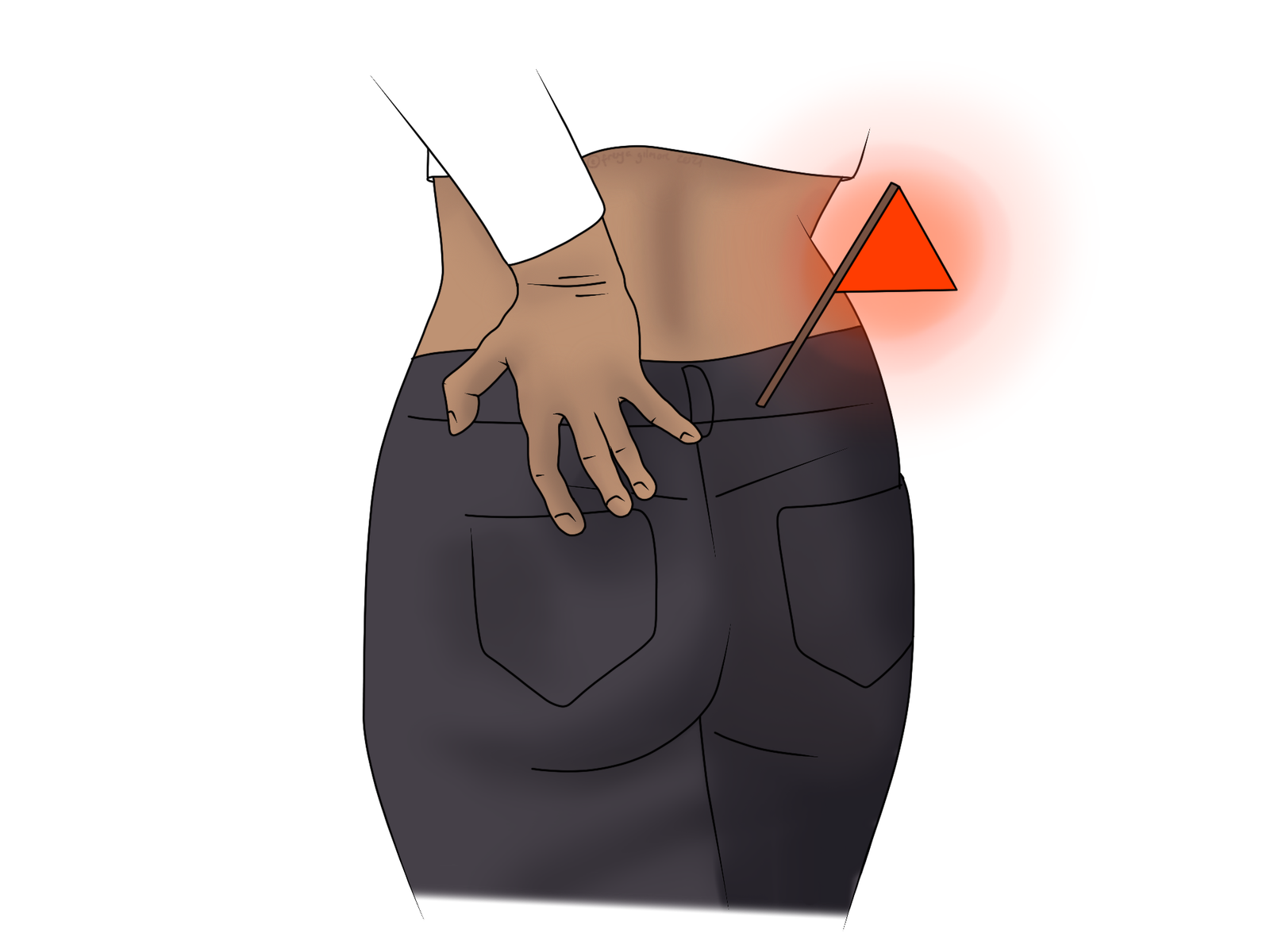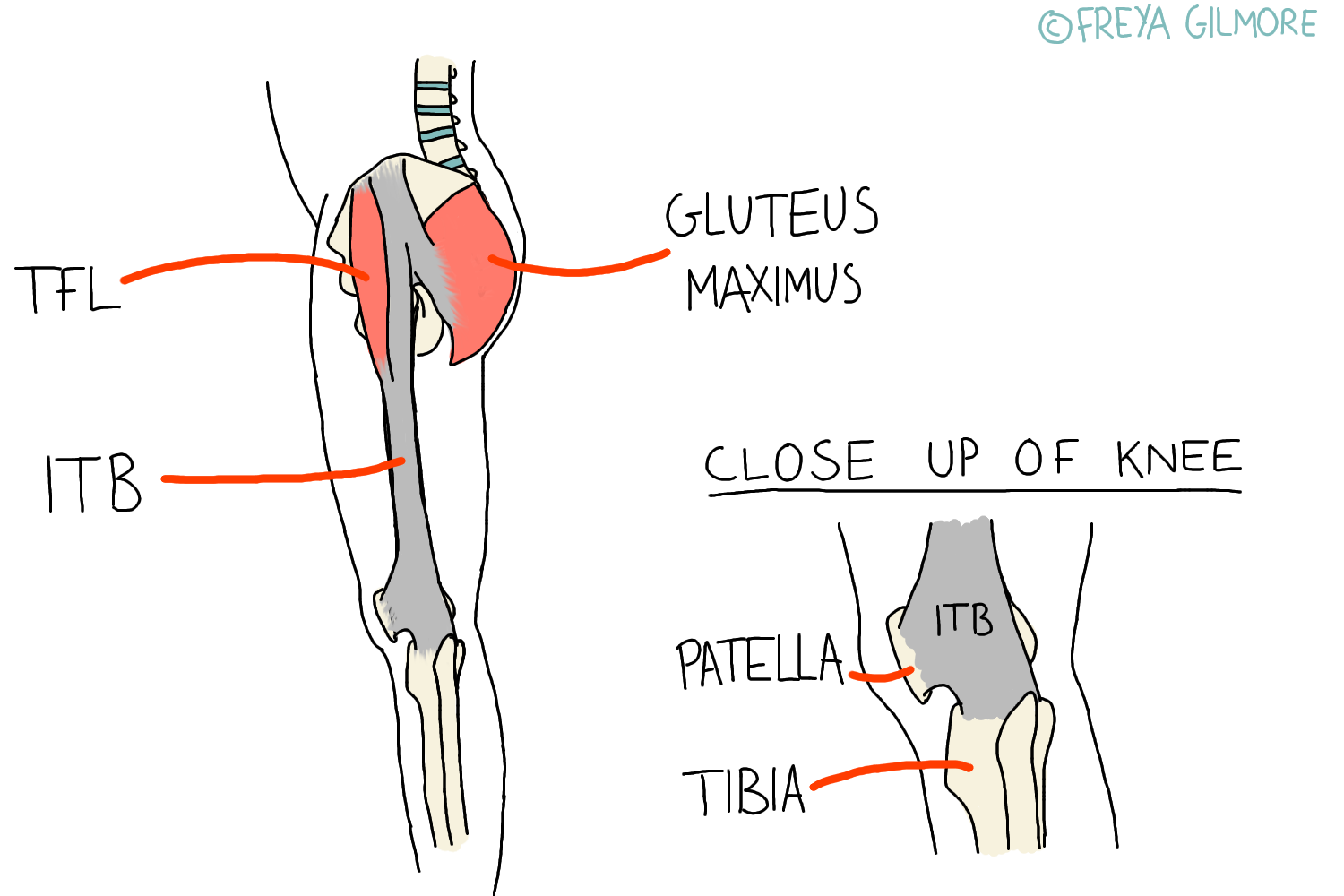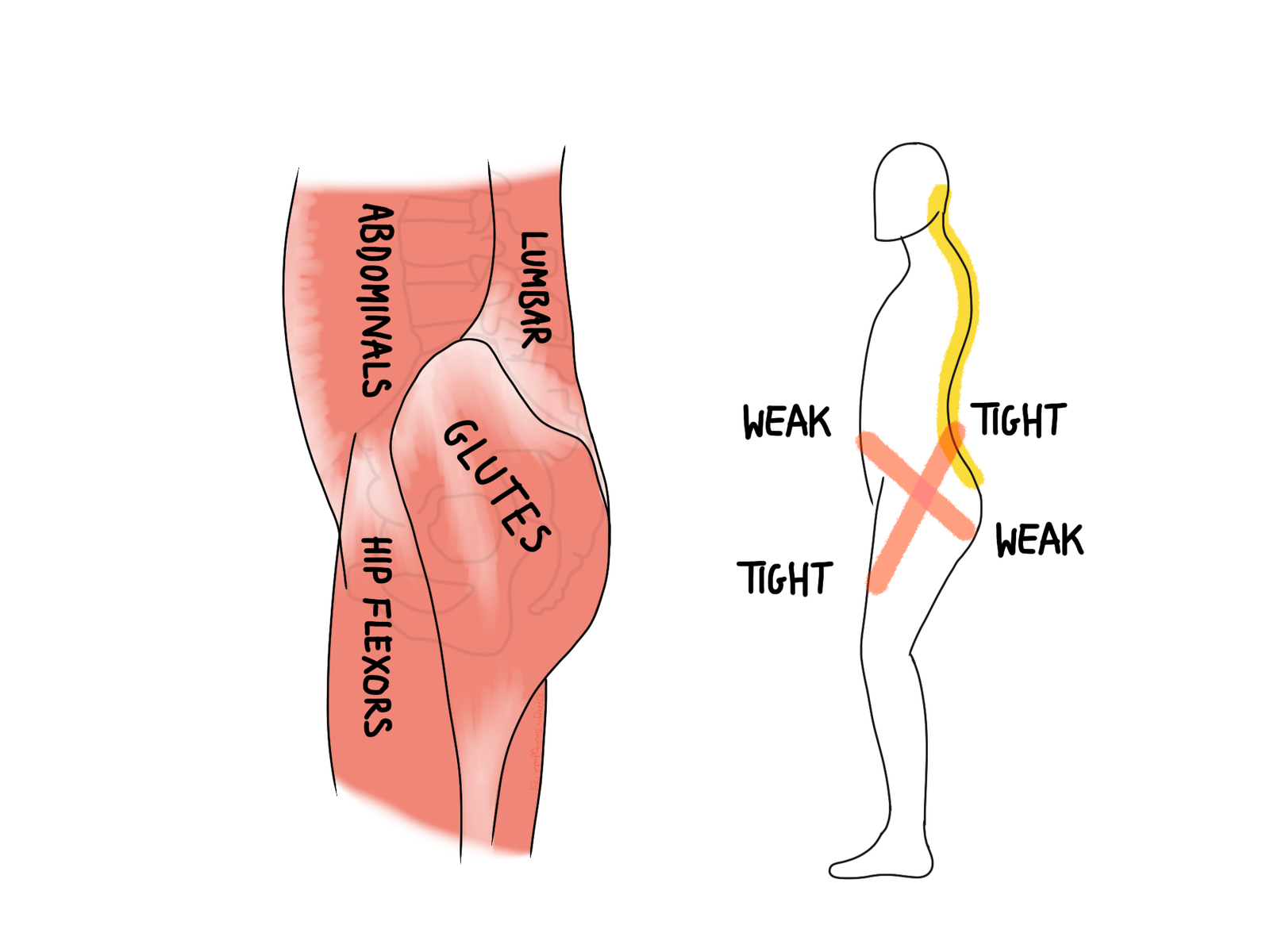The IT band is a band of tissue that runs down the side of the…

When Should Your Back Pain Concern You?
Most back pain is uncomfortable, but nothing to worry about. However there are some symptoms that make an episode of back ache more concerning. Rarely, this warrants an urgent trip to A&E, so it’s worth knowing the signs to be aware of.
Cauda Equina Syndrome
The spinal cord doesn’t actually go all the way to the bottom of the spinal column. In the lower back it splits into the “horse’s tail” of nerves that go on to exit between vertebrae. When these are compressed, they can cause:
- numbness in the saddle area: you might not feel yourself going to the loo or wiping
- bladder or bowel incontinence
- inability to empty your bladder fully, or at all
- numbness or weakness in both or either leg
These symptoms may also come with usual back pain and sciatica symptoms. However if you come to clinic with the symptoms listed above, we will likely send you straight to hospital. The reason for this is when the nerves of the cauda equina (horse’s tail) are compressed for too long, they can be irreparably damaged. This means those symptoms can become permanent. Cauda equina syndrome is considered a medical emergency, and may require immediate decompressive surgery. If you’re unsure whether your symptoms constitute an emergency, err on the side of caution and seek urgent medical attention.
Spinal Infection
Although rare, the bones of the spine can suffer a bacterial infection. Some cases can be managed with antibiotics, but surgery might be needed if an abscess forms. Some people are at higher risk of developing osteomyelitis, such as people who:
- have diabetes
- have an wound or local infection anywhere on the body
- previously suffered with osteomyelitis
- have recently broken a bone
- are on immunosuppressants, or have a compromised immune system for other reasons
Back pain combined with a fever are the red flag symptoms here. If your pain is unrelenting, especially causing severe pain overnight, this should also be noted. Beyond pain, you may also develop local tenderness, heat, and possibly redness. If your symptoms align with these, call 111 or your GP as soon as you can.
Back Pain Due to Fracture
It can be surprisingly easy to break a vertebra, especially if you have osteoporosis. Sometimes a small fall can be enough, or if bone density is particularly low, a crush fracture can occur without direct trauma. Sometimes if a specific part of the bone is broken, it can cause one vertebra to slip forwards or backwards on another (spondylolisthesis). This can be associated with symptoms of sciatica if a nerve is caught in the slippage. You might find that laying down resolves your symptoms, although this is not purely indicative of a fracture.
Your osteopath can’t X-Ray your back, so we can’t be certain whether your pain is caused by a break. However we can test for a fracture using vibration. Your case history is important too, as this will suggest whether the cause might be a fracture or something else. Movement is often limited, with muscles around the area working very hard to keep it still. Speak to your GP if you suspect you may have a fracture in your back.
Back Pain and Osteopathy
The good news is that most back pain is innocuous. Your osteopath can help with:
- pulled muscles
- osteoarthritis
- simple nerve pain such as sciatica
- joint stiffness
- pain associated with bulging discs
We can also help with preventing problems, such as giving advice for improving your desk set up and prescribing exercises.
You don’t need a diagnosis or referral before visiting us, and you can book online below.
Make an appointment for your lower back pain in Camberley here.




